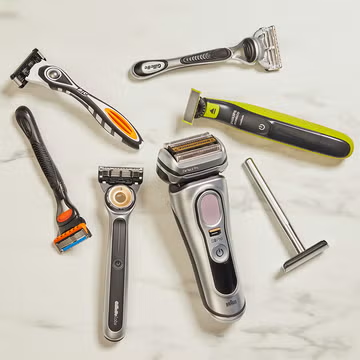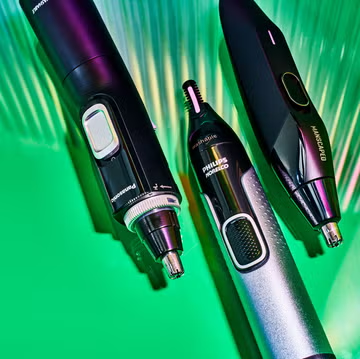IN THE HIERARCHY of bro-coded exercises, few rank higher than the barbell shoulder shrug. It’s an ego boosting movement that can move big weight and (in theory) is meant to sculpt the type of meaty neck and shoulders muscle-heads spend hours in the gym hoping to build.
Just because you’ve seen the biggest guy in your gym shrugging barbells stacked with plates doesn’t mean it’s necessarily the best choice for you. And if he’s just hanging on and not working through a good range of motion, it’s not doing much for him, either. The barbell shoulder shrug isn’t an exercise that everyone needs to do, according to Men’s Health fitness director Ebenezer Samuel, C.S.C.S.—and if you want to do it right, you’ll need to know what you’re doing.
Here, Samuel and senior fitness editor Brett Williams, NASM explain who should be doing shoulder shrugs, the nuances of the exercise, and how to best use it to your advantage.
How to Do the Barbell Shrug
“The barbell shrug seems simple, and in many ways it is,” Samuel says. You’re simply standing upright and raising your shoulders while holding a bar loaded with plates. There is more to it than you’d think. Here’s a step-by-step guide for cues how to do the movement.
How to Do It:
- Set up the rack so that the bar hits just above your knee. Walk up to it like you’re going to perform a quick rack pull: bring your knees close to the bar, grab it with an overhand grip with your hands at about shoulder-width, push your butt back, and keep your back flat.
- Rotate the pits of your elbows forward as you grip.
- Inhale and squeeze your glutes to return to standing.
- Think about driving your pinkies out to ‘break the bar’, and rotate the shoulders back.
- Raise your shoulders up towards your ears without leaning forwards. Don’t let your hips help you. Hold for a second before slowly lowering down to full stretch on the traps.
 Men’s Health
Men’s Health
Advertisement – Continue Reading Below
Benefits of the Barbell Shrug
Classic shrugs will challenge your traps muscles and grip strength. That’s important for all of the uses of the traps, including movement of the head, elevating of the shoulders, and internal rotation of the arm.
Building grip strength will carry over into all your other lifts. You’ll be able to carry heavier loads, which may be your limiting factor in heavier compound lifts like suitcase squats and walking lunges. Both the benefit to the forearms and the traps can translate into other, bigger lifts, like the rack pull and the barbell deadlift.
You can also load the barbell shrug way heavier than you might be able to in a kettlebell or dumbbell shrug—a major benefit if you’re looking to really build your traps.
Who Should Do Barbell Shrugs?
“Are barbell shrugs a move everyone needs to do? Absolutely not. That’s doubly true if you have shoulder issues,” Samuel says. The shrug emphasizes moving the shoulder blades upwards—a movement we don’t typically want to do. It creates a lot of tension through our neck and shoulders, which can lead to issues in the long term.
In fact, it benefits us more to train the opposite—moving the shoulder blades down and back, into what’s called scapular depression.
Muscles Worked by the Barbell Shrug
The main mover of the barbell shrug are your traps muscles, which connect our neck to our shoulders. The exercise will also challenge to your forearms to improve your grip strength as well, if you do it without wrist wraps or straps.
How to Add Barbell Shrugs Into Your Workouts
This movement isn’t for everyone. If you really badly want to grow your traps, though, it is an option. Start with dumbbell or kettlebell shrugs first, Samuel says. Free weights like these provide a healthier angle to worth through for your shoulders.
Add this into a shoulder or back day, but save it for after your main lifts. Start your day with your main shoulder presses and lat pulldowns, and then factor this towards the end. Do 2 to 3 sets of 10 to 12 reps. Go heavy, but keep it high rep to ensure proper hypertrophy.











